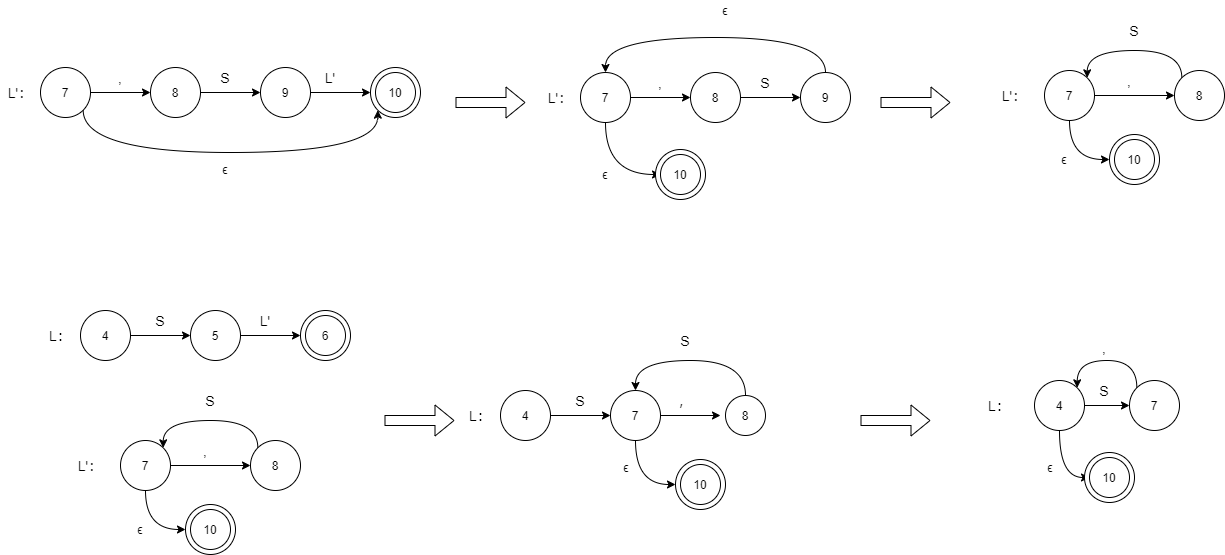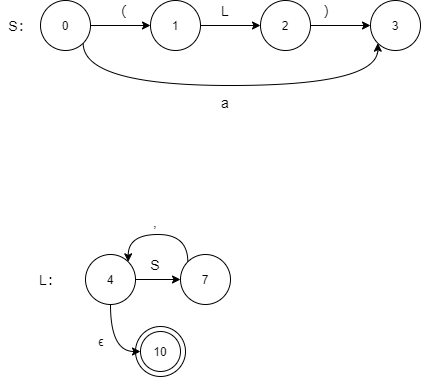编译原理作业4
Exercise 4.1
Given the following grammar :
$$
S → ( L ) | a\
L → L , S | S
$$
Eliminate left recursions in the grammar.
Draw the transition diagrams for the grammar.
Write a recursive descent predictive parser.
- Indicate the procedure call sequence for an input sentence (a, (a, a)).
首先消除左递归后结果如下:
$$
S → ( L ) | a\
L → SL’\
L’ → ,SL’ | \epsilon
$$
画出transition diagrams,如下:



recursive descent predictive parser如下:
1 | void S() throws SyntacticException { |
对于(a, (a, a)),运行如下:
在这里用缩进代表函数调用的层数,运行如下:
1 | call S(): |
Exercise 4.2
Consider the context-free grammar
$$
S → a \ S\ b\ S\ |\ b\ S\ a\ S\ |\ \epsilon
$$
Can you construct a predictive parser for the grammar? and why?
不可以,理由如下:
令$\alpha = a \ S\ b\ S\ |\ b\ S\ a\ S\ $,$\beta = \epsilon$,有$S → \alpha \ |\ \beta $
可以得到:
$FIRST(\alpha) = {a,b}$,$FOLLOW(S) = {a,b, \psi}$
所以有:
$FIRST(\alpha)\ \cap \ FOLLOW(S) \neq \varnothing$
所以无法给该语法构建一个可预测的parser。
Exercise 4.3
Compute the FIRST and FOLLOW for the start symbol of the following grammar.
$$
S → \ S\ S\ +\ |\ S\ S\ *\ |\ a
$$
$FIRST(S) = {a}$
$FOLLOW(S) = {+, * , \psi}$

